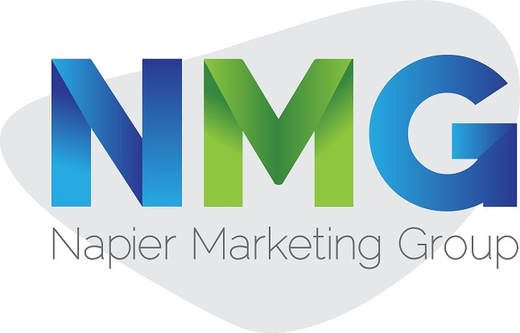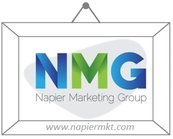Best Ways to Use Surveys as an HR Professional
Human Resources (HR) experts are essential to an organization's success in today's fast-paced business environment because they develop employee engagement, satisfaction, and progress. Surveys are one essential tool they have at their disposal to gather staff opinions and ideas. HR can make significant progress in a number of workforce management areas, including performance reviews, organizational growth, and employee satisfaction, by making proper use of these helpful questionnaires.
Measuring and Improving Performance Effectively
A crucial component of HR's duties is performance reviews, and polls can be quite helpful in this context. Traditional annual performance assessments frequently fail to offer pertinent and useful criticism. Specialists can add to these reviews by conducting recurring surveys that gather up-to-date information on employees' performance and opinions about the assessment procedure. It is possible to ask questions about the efficacy of feedback methods, the fairness of assessments, and the clarity of performance goals.
HR teams can pinpoint areas where performance management procedures may need to be improved by using such questionnaires. Surveys are another tool they can use to get feedback on a worker's performance from team members, managers, and the person themselves. Employee performance and career advancement are enhanced by HR's ability to offer customized coaching and development opportunities, made possible by this comprehensive feedback.
Enhancing Employee Satisfaction
Worker satisfaction is the cornerstone of a happy and effective staff. Employee satisfaction is positively correlated with motivation, engagement, and commitment to roles. Management can make good use of online surveys to measure and enhance employee happiness. These polls ought to be made to address a broad range of subjects, such as chances for career advancement, work-life balance, and perks and compensation. HR may foster an atmosphere where workers feel comfortable sharing their thoughts and are encouraged to do so by gathering input via anonymous questionnaires.
In addition, human resources can use the learned insights to customize programs, benefits, and regulations that speak to the needs and preferences of the workforce. This proactive strategy promotes a culture of ongoing improvement while also improving employee happiness.
Driving Organizational Development and Change
Measuring and Improving Performance Effectively
A crucial component of HR's duties is performance reviews, and polls can be quite helpful in this context. Traditional annual performance assessments frequently fail to offer pertinent and useful criticism. Specialists can add to these reviews by conducting recurring surveys that gather up-to-date information on employees' performance and opinions about the assessment procedure. It is possible to ask questions about the efficacy of feedback methods, the fairness of assessments, and the clarity of performance goals.
HR teams can pinpoint areas where performance management procedures may need to be improved by using such questionnaires. Surveys are another tool they can use to get feedback on a worker's performance from team members, managers, and the person themselves. Employee performance and career advancement are enhanced by HR's ability to offer customized coaching and development opportunities, made possible by this comprehensive feedback.
Enhancing Employee Satisfaction
Worker satisfaction is the cornerstone of a happy and effective staff. Employee satisfaction is positively correlated with motivation, engagement, and commitment to roles. Management can make good use of online surveys to measure and enhance employee happiness. These polls ought to be made to address a broad range of subjects, such as chances for career advancement, work-life balance, and perks and compensation. HR may foster an atmosphere where workers feel comfortable sharing their thoughts and are encouraged to do so by gathering input via anonymous questionnaires.
In addition, human resources can use the learned insights to customize programs, benefits, and regulations that speak to the needs and preferences of the workforce. This proactive strategy promotes a culture of ongoing improvement while also improving employee happiness.
Driving Organizational Development and Change
|
Companies are always altering in order to keep up with new trends and shifting market conditions. By employing surveys as a tactical instrument for organizational development and change management, HR departments may support this evolution. Management can use polls to determine how prepared and receptive staff members are for big changes, such as restructuring or a shift in culture when the firm is going through them.
These questionnaires may ask about the effectiveness of communication, the need for training, and potential employee problems. |
The input gathered can help HR create change management plans that cater to particular issues, provide the necessary resources, and guarantee a more seamless transition. This aids in creating a better and healthier work environment for everyone involved.
Enhancing Employee Engagement and Retention
Employee retention and productivity are greatly influenced by engagement. Individuals who are engaged are more likely to stick with a company, put in their best work, and represent it well. Assessments are an effective tool that HR professionals may use to gauge and raise employee engagement. Frequent engagement surveys are a good way to find out how engaged staff members are with their work, their teams, and the overall goal of the company.
Management may create polls that determine what influences engagement and pinpoint areas that want improvement. These studies can explore topics including work-life balance, leadership effectiveness, and chances for advancement. HR may create efforts to increase employee engagement, like flexible work schedules, leadership development programs, and recognition programs, with the help of the data gathered.
Surveys are really useful tools that managers may utilize to improve a variety of workforce management issues. Polls offer useful insights that support the success of organizations, from assessing and enhancing employee happiness to promoting organizational development and change. Thus, questionnaires should be welcomed by HR professionals as a strategic ally in their quest for superior staff management.
Enhancing Employee Engagement and Retention
Employee retention and productivity are greatly influenced by engagement. Individuals who are engaged are more likely to stick with a company, put in their best work, and represent it well. Assessments are an effective tool that HR professionals may use to gauge and raise employee engagement. Frequent engagement surveys are a good way to find out how engaged staff members are with their work, their teams, and the overall goal of the company.
Management may create polls that determine what influences engagement and pinpoint areas that want improvement. These studies can explore topics including work-life balance, leadership effectiveness, and chances for advancement. HR may create efforts to increase employee engagement, like flexible work schedules, leadership development programs, and recognition programs, with the help of the data gathered.
Surveys are really useful tools that managers may utilize to improve a variety of workforce management issues. Polls offer useful insights that support the success of organizations, from assessing and enhancing employee happiness to promoting organizational development and change. Thus, questionnaires should be welcomed by HR professionals as a strategic ally in their quest for superior staff management.




